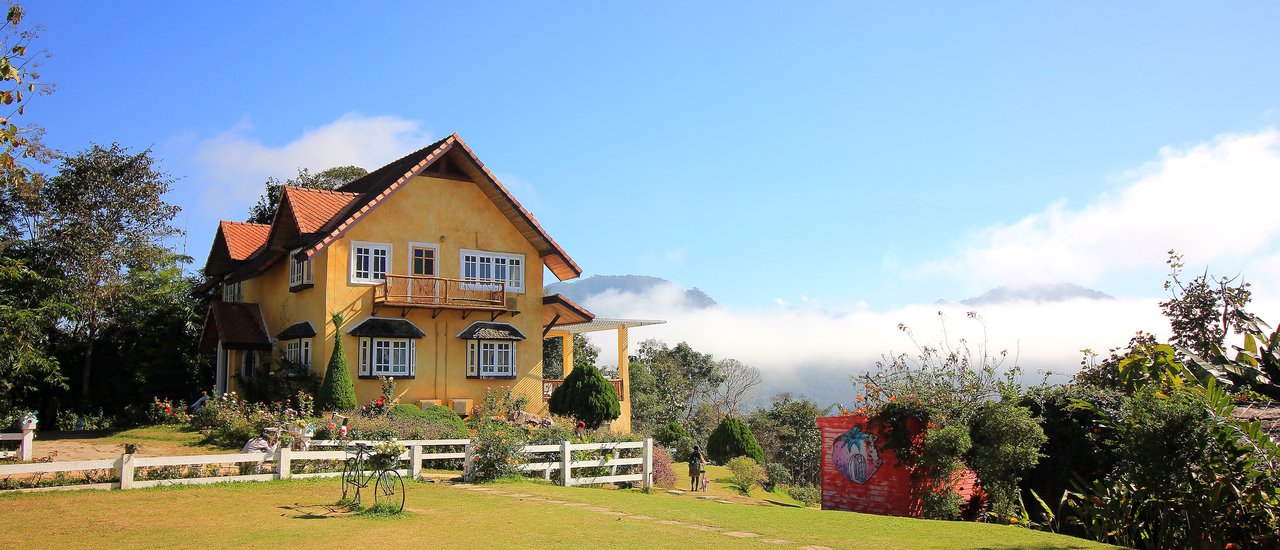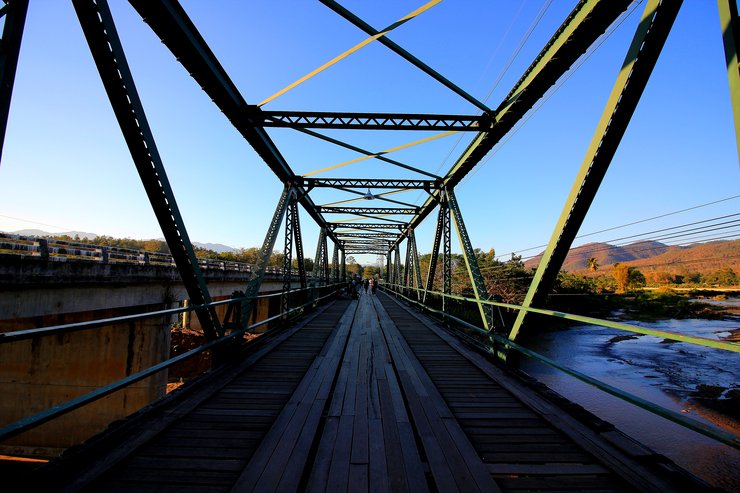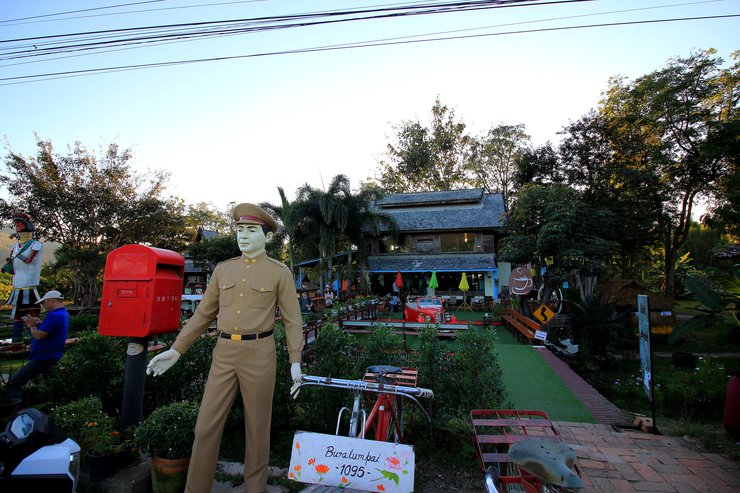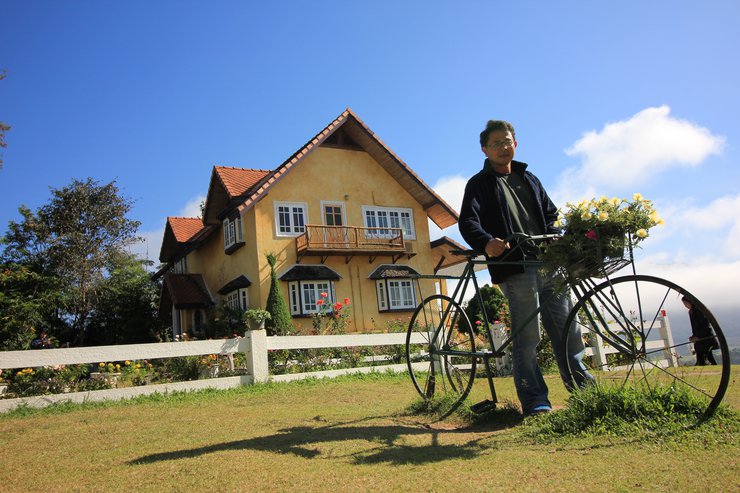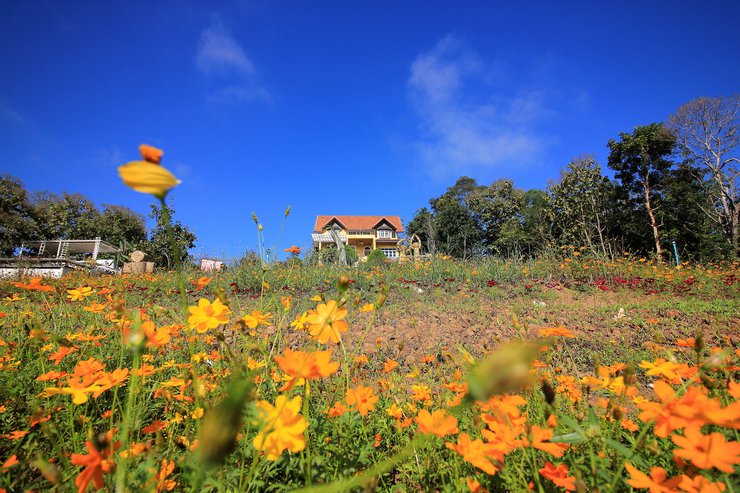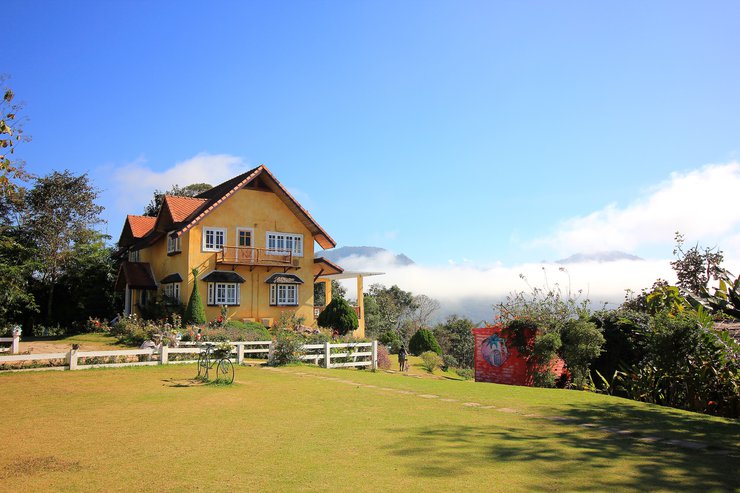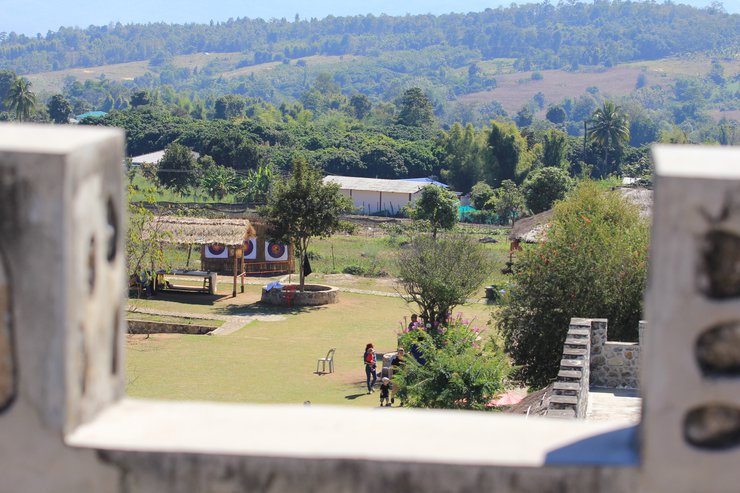I traveled by private car from Chiang Mai province to Pai district, Mae Hong Son province, a distance of approximately 150 kilometers. The route was winding and mountainous, with a total of 684 curves, making it a challenging drive.
Pai District is a district in the northern part of Mae Hong Son Province, with a population of approximately 30,000 people and an area of approximately 1,000 square kilometers. Various ethnic groups have migrated to the area, including Thai Yuan (Northern Thai), Shan, Karen, and various hill tribes. Due to its fertile land and numerous rivers, Pai has historically been a center for agriculture. Today, Pai is a major transportation hub on the route between Chiang Mai and Mae Hong Son, and a popular tourist destination for both Thai and international visitors. Pai is known as a charming and romantic small town in the north, attracting tourists who find it unforgettable.
The Historic Bridge of Pai: A Gateway to Enchantment
The journey from Chiang Mai to Pai takes approximately three hours. Upon entering the Pai district, the first landmark that greets visitors is the Pai River Bridge, also known as the Tha Pai Historical Bridge. This bridge serves as a gateway to the enchanting town of Pai, inviting travelers to immerse themselves in its unique charm.
Built during World War II, the Pai River Bridge is a testament to its historical significance. Constructed of large steel beams, it was originally used by the Japanese army to transport weapons and troops into Burma. Today, the bridge stands as a popular tourist destination, offering stunning views and a glimpse into the town's rich past.
Visitors can stroll across the bridge, capturing picturesque photographs of the surrounding landscape. The bridge is flanked by numerous souvenir shops, offering a wide array of local crafts and mementos. Across the street, charming cafes provide a welcoming respite for travelers to relax and enjoy a refreshing beverage.
The Pai River Bridge is more than just a historical landmark; it is a symbol of the town's welcoming spirit and its ability to captivate visitors with its unique blend of history, culture, and natural beauty.


After visiting the historic bridge, we headed to the highlight of Pai, a must-visit for everyone: PAI IN LOVE. This location gained fame as the filming site for the movie "Pai in Love." Today, it serves as a café, accommodation, and a popular photo spot for tourists throughout the day, especially Chinese tourists who follow the footsteps of the movie characters.



Leaving Pai in Love, I continued on to Ban Santichon, a Yunnan Chinese village located approximately 4.5 kilometers from Pai district. This community showcases the unique culture of the Yunnan Chinese people, attracting Thai tourists. I emphasize "Thai tourists" because during my visit, I did not see a single Chinese tourist. Perhaps the Chinese are not interested in visiting a place that resembles their own homes. There were a few Western tourists present.
The village focuses on both preserving and promoting Yunnan Chinese culture, as well as developing local businesses. In the past, Ban Santichon was almost a closed village due to drug problems, discouraging outsiders from visiting. However, these issues have now been resolved, and the community has come together to develop tourism as a means of self-sufficiency, boosting the local economy and generating income for families.


As dusk approached, I sped towards another crucial location: Lan Hill. Lan Hill is a hidden gem in Pai, offering breathtaking sunset views that few Thai people know about. As the sun began to dip below the horizon, foreign tourists, mostly Westerners, gathered atop the hill to witness the spectacle.
The Grand Canyon of Pai: A Natural Wonder
The Pai Canyon, also known as Kong Lan, is a breathtaking natural wonder located approximately 7 kilometers from Pai town. This geological marvel, reminiscent of the Grand Canyon, boasts stunning landscapes formed by the erosion of soil by wind and rain. The resulting deep ravines and steep cliffs create a dramatic and awe-inspiring sight.
The canyon's name, "Kong Lan," translates to "goat village," due to its resemblance to the Goat Canyon in Phrae province. The Pai Canyon's unique topography features narrow pathways and steep drops, offering a thrilling experience for adventurous visitors.
Reaching the canyon requires a short but strenuous climb from the parking lot. The uphill trek can be tiring, but the panoramic views and the opportunity to witness the power of nature make it worthwhile.





It's getting dark now. Let's continue together later.
Roti went on a trip.
นายโรตี หนีเที่ยว
Friday, October 4, 2024 3:27 PM

